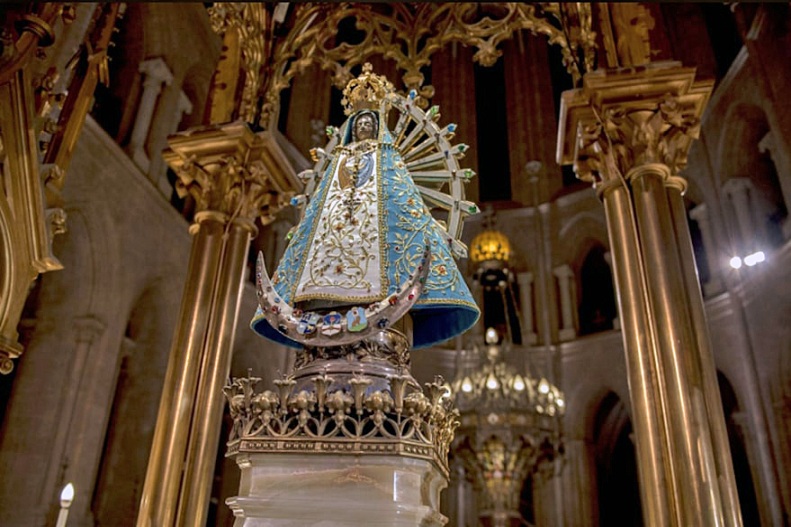

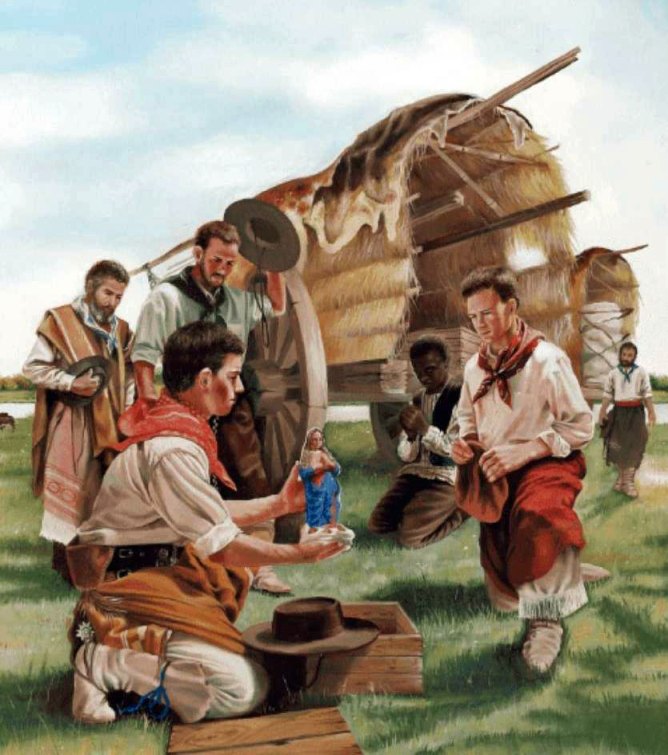 Pre-dating the Shrines of Our Lady of Light mentioned in Part I by many years, is that which is more commonly known by its location – Our Lady of Luján.
In 1630 a certain Portuguese, whose name has not come down to us, had a farm near Sumampa, a village some 1200 km from Buenos Aires. Being a devout Catholic,
he wished to erect a chapel on his estate, and dedicate it to the Blessed Virgin Mary under the title of the Immaculate Conception. Accordingly, he wrote to a friend in Brazil
(then a colony of Portugal) for a small image of Our Lady under that title, asking him to send it by sea to Buenos Aires. His friend, not knowing precisely the style desired,
sent two images – one of the Immaculate Conception, the other a Madonna and Child. The ship arrived safely at Buenos Aires, and the sacred images had to be conveyed all the
rest of the way by oxcart – a clumsy vehicle on two huge wheels. These carts at that time traveled in caravans – sometimes twenty or thirty together –
a measure rendered necessary by hostile Indians.
Pre-dating the Shrines of Our Lady of Light mentioned in Part I by many years, is that which is more commonly known by its location – Our Lady of Luján.
In 1630 a certain Portuguese, whose name has not come down to us, had a farm near Sumampa, a village some 1200 km from Buenos Aires. Being a devout Catholic,
he wished to erect a chapel on his estate, and dedicate it to the Blessed Virgin Mary under the title of the Immaculate Conception. Accordingly, he wrote to a friend in Brazil
(then a colony of Portugal) for a small image of Our Lady under that title, asking him to send it by sea to Buenos Aires. His friend, not knowing precisely the style desired,
sent two images – one of the Immaculate Conception, the other a Madonna and Child. The ship arrived safely at Buenos Aires, and the sacred images had to be conveyed all the
rest of the way by oxcart – a clumsy vehicle on two huge wheels. These carts at that time traveled in caravans – sometimes twenty or thirty together –
a measure rendered necessary by hostile Indians.
Our Lady's two images, each boxed up separately, were placed in the same cart. The caravan traveled slowly, of course, and on the third day reached a spot near the River Luján, where there is a ranch called Rosendo de Oramas, after its owner. Camping there for the night, the men prepared to resume their journey next morning, when a wonderful thing occurred. The cart which held the sacred images would not move! The oxen were cruelly goaded, and as many as six yoke attached to the vehicle; yet, although there was no obstacle from road or rut, all efforts at motion proved futile. At last, it is said, the miracle recorded in the Old Testament (Num. 22: 28) was renewed; only this time it was an ox that spoke, reproaching his drivers for their blindness. This protest opened their eyes at once to the supernatural character of what had befallen the cart; so they took down the box containing the larger image (of the Madonna and Child), and then plied the goad. But no; the wheels would not stir. On the other box being taken out of the cart, all difficulty was over. It was, therefore, clear to them that Our Blessed Lady wished the smaller image, at any rate, to remain at the spot She had chosen. And there it did remain, while the other continued its long drive to Sumampa. It is still venerated there as Our Lady of Consolation (image below right).
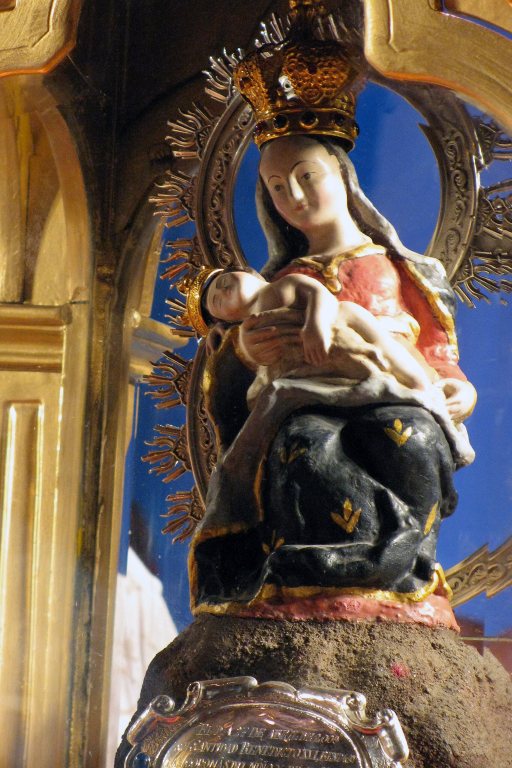 Near the banks of the River Luján, on the property of Don Rosendo, a very rudimentary chapel was built for the little statue of the Immaculate Conception,
and entrusted to the care of a black slave named Miguel. From the beginning the small shrine became increasingly more and more popular. Miguel served as sacristan,
devoting himself to the poor and the sick. But in 1663, a new road was traced and the old road passing by the shrine fell into disuse. The place began to receive fewer visitors.
Miguel, however, remained the faithful sacristan of the Virgin.
Near the banks of the River Luján, on the property of Don Rosendo, a very rudimentary chapel was built for the little statue of the Immaculate Conception,
and entrusted to the care of a black slave named Miguel. From the beginning the small shrine became increasingly more and more popular. Miguel served as sacristan,
devoting himself to the poor and the sick. But in 1663, a new road was traced and the old road passing by the shrine fell into disuse. The place began to receive fewer visitors.
Miguel, however, remained the faithful sacristan of the Virgin.
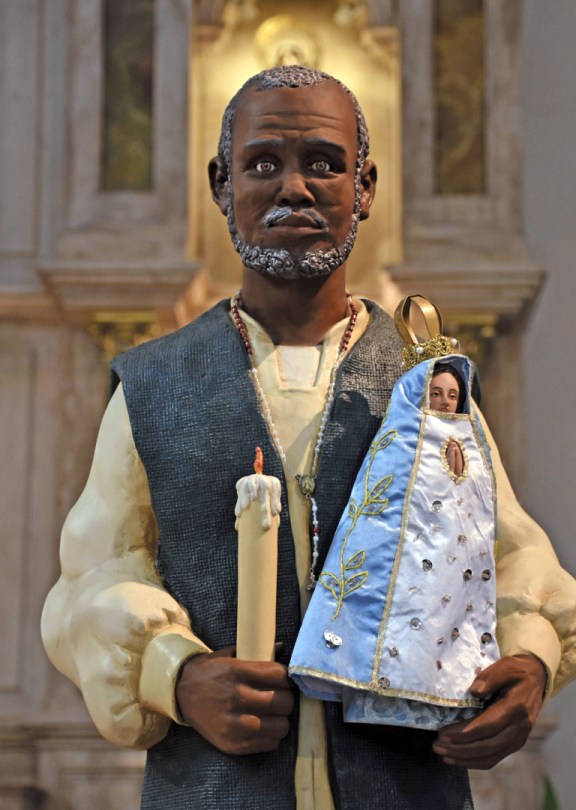 A certain Doña Ana de Mattos, who owned another ranch in the region, proposed to Don Rosendo's son to move the statue onto her property, now crossed by more travelers.
In 1671, the statue was moved to a place called El Arbol Solo, which eventually became the town of Luján. The day following Her transfer, the statue disappeared,
to be found again in Her former little shrine. She was brought back but mysteriously returned to her first dwelling in the same way. Some at first accused Miguel of having stolen
the statue to bring it back to his home; then it was realized that it could not have been so. Doña Ana sought the advice of the authorities. After the ruling,
the statue of Our Lady was brought in solemn procession from Don Rosendo's ranch to Doña Ana's chapel, accompanied by Her trusted sacristan Miguel, who stayed there to serve Her.
After this the Virgin consented to stay and never "ran away" again.
A certain Doña Ana de Mattos, who owned another ranch in the region, proposed to Don Rosendo's son to move the statue onto her property, now crossed by more travelers.
In 1671, the statue was moved to a place called El Arbol Solo, which eventually became the town of Luján. The day following Her transfer, the statue disappeared,
to be found again in Her former little shrine. She was brought back but mysteriously returned to her first dwelling in the same way. Some at first accused Miguel of having stolen
the statue to bring it back to his home; then it was realized that it could not have been so. Doña Ana sought the advice of the authorities. After the ruling,
the statue of Our Lady was brought in solemn procession from Don Rosendo's ranch to Doña Ana's chapel, accompanied by Her trusted sacristan Miguel, who stayed there to serve Her.
After this the Virgin consented to stay and never "ran away" again.
So it came to pass that, in the year 1677, Father Pedro Montalvo built a chapel on this spot, with the money of the good Doña Ana. In 1730 – the centenary of the miraculous detention above recorded – Bishop Juan Arregui erected a church in place of the humble chapel. As the number of pilgrims continued to increase, this church was rebuilt and enlarged in 1754 by Bishop Agramont and Don Juan Lezica. In 1763 Our Lady of Luján was declared Patroness of Buenos Aires – that is, of the entire Province. And what was this but a solemn public acknowledgment of so many and great favors received from Her? Particularly in the war of independence, which was fought in the early part of the 19th century, the Argentines invoked Our Lady of Luján to aid them, and attributed their victories to Her intercession. During this period, from the late 18th to the early 19th century, the Argentinean flag was designed by Carlos Belgrano to reflect the blue and white colors of the Immaculate Virgin of Luján, who is invoked today as the Patroness of all the countries of La Plata: Paraguay, Uruguay, and Argentina. In 1824 the Shrine was visited by Fr. Giovanni Maria Mastai-Ferretti, at that time assistant to the Papal Nuncio to South America, but later Pope Pius IX.
In the same century, one other person stands out in the history of Luján: Father Jorge María Salvaire. A Frenchman on his father's side, but also a Spaniard
through his mother, he was part of the first group of Lazarist missionaries who came to Luján. In 1874, he was sent to evangelize the indigenous on their lands.
The hostile Indians captured him and sentenced him to be executed by arrows. The missionary invoked the Virgin under Her title of Our Lady of Luján,
vowing to write Her story and to restore Her shrine. Providentially, the son of the cacique (chief) saved him. Attributing his release to Our Lady,
he fulfilled his vow to publish the history of the Virgin of Luján in 1884, which he did in two heavy volumes, in which he refers especially to the oldest narration of the arrival
of the Image and the miracle, given by Fray Pedro Nolasco of Santa María in 1737 (image below right). He also had a jeweled crown made in Paris, specially blessed by Pope Leo XIII
on September 30, 1886. Of course he petitioned the Holy Father to canonically crown the Image of Luján – and it was one of the first such coronations in the New World.
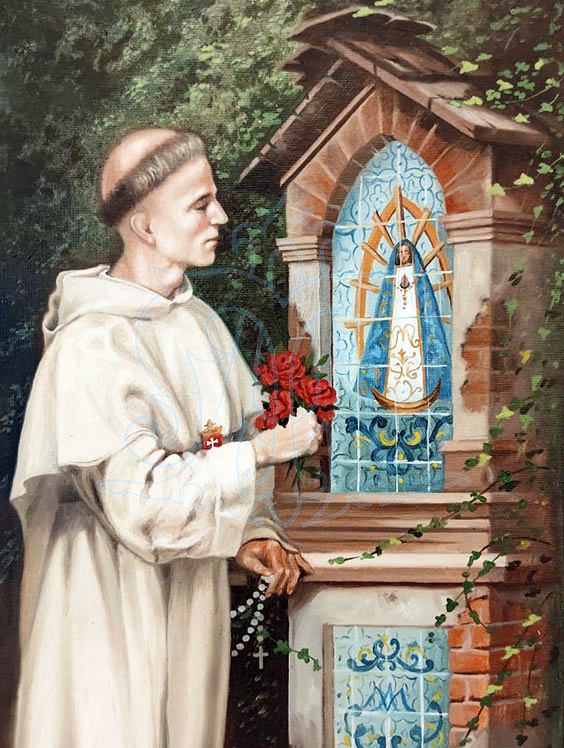
At only 14 inches in height, the Image itself seems peculiarly small to those who are unfamiliar with the Church in Latin America, but such petite images are not uncommon – for example, Our Lady of Zapopan and Our Lady of San Juan de los Lagos, both of Mexico and both depicting the Immaculate Conception. As is also not uncommon, the dress of the Image consists of a white robe, like an alb, which widens out, bell-shaped, at the feet; over this a blue mantle, like a cope, covering the head and reaching to the feet. Both garments are of silk and richly embroidered. The Shrine of Luján is literally covered with votive offerings – silver hearts, arms, legs, etc. – made in acknowledgement of favors received. But far more valuable donations have been lavished at Our Lady's feet there. The crown, mentioned above, was formed from the store of gold and jewels, faithfully treasured by the Lazarist Fathers who had charge of the Sanctuary of Luján. The solemn coronation of the statue took place on May 8, 1887, in the presence of 40,000 people. Eight days later, the Archbishop of Buenos Aires laid the first stone of the future basilica, which was finished in 1935. Unfortunately the Image of Luján has not aged as well as some others, but this too is not uncommon.
Pope Leo XIII had at first delegated Fr. Salvaire to crown the sacred Image in his name; but the humble priest had come to ask that honor for Archbishop Aneiros, and the Holy Father granted the request. The Archbishop had made a vow of pilgrimage to Luján when the cholera had attacked the region, and he attributed to Our Lady's intercession the fact that Buenos Aires was singularly spared.
Fr. Salvaire had another favor to ask from the Holy Father – the concession of a new Feast, with a proper Mass and Office, in honor of Our Lady of Luján. He asked that it might be assigned to the Fourth Sunday after Easter. The Congregation of Rites granted the petition and even added an Octave. After Pope St. Pius X ordered all such particular Feasts to no longer be assigned to Sundays, the date for the Feast was changed to May 21.
A Passionist priest, Fr. Edmund of the Heart of Mary, wrote to a Catholic journal about the coronation ceremony mentioned above. He ended with this lament about
the state of affairs in 1887, which is certainly far worse today: I am sure your readers will all join with me in the hope that our glorious Lady of Luján will bring about a
great revival of faith and practice among this nominally Catholic people. When She first came among them, they were fervent. There still are to be seen many native families,
as well as individuals, well worthy of the name of Catholic. But alas! within the past thirty years (as I am told) the circle of the elect has narrowed alarmingly.
The Church is hampered and insulted by a Masonic Government, whose propaganda is to destroy Christianity by infidel education and every other means in its power.
The worst feature of the case is the fact that the people are alienated from their clergy to a very serious extent. Their minds have been poisoned, it would seem,
by the bad Italian element which has been flowing into the country – I mean the revolutionary, Garibaldian, secret-society element; for a considerable portion of the Italians
who come here are much better Catholics than the natives. Yes, the Argentine clergy, though a respectable body of men, are regarded by their people as holding a purely
official position – as salaried servants of the State. Consequently so many of their flock will not come near them except when obliged to do so, such as for baptisms, marriages,
or funerals; while even in case of fatal illness the priest is seldom sent for till life is despaired of; and then, of course, it is often too late to benefit the parting soul.
The entrance of a priest into their houses means death in the eyes of these people. No wonder, then, that the Argentine clergy dread the separation of Church and State.
But there is no need to dwell further on this painful picture to convince your good readers that Our Lady of Luján has a vast work of reform to accomplish,
if the wills of Her rebellious children can be brought to yield to God’s grace.
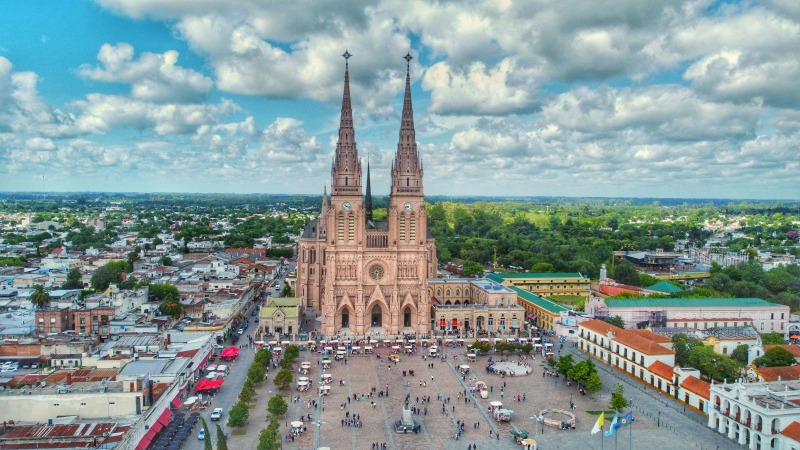
Additional Article on Our Lady of Guadalupe
Alphabetical Index; Calendar List of Saints
Contact us: smr@salvemariaregina.info
Visit also: www.marienfried.com